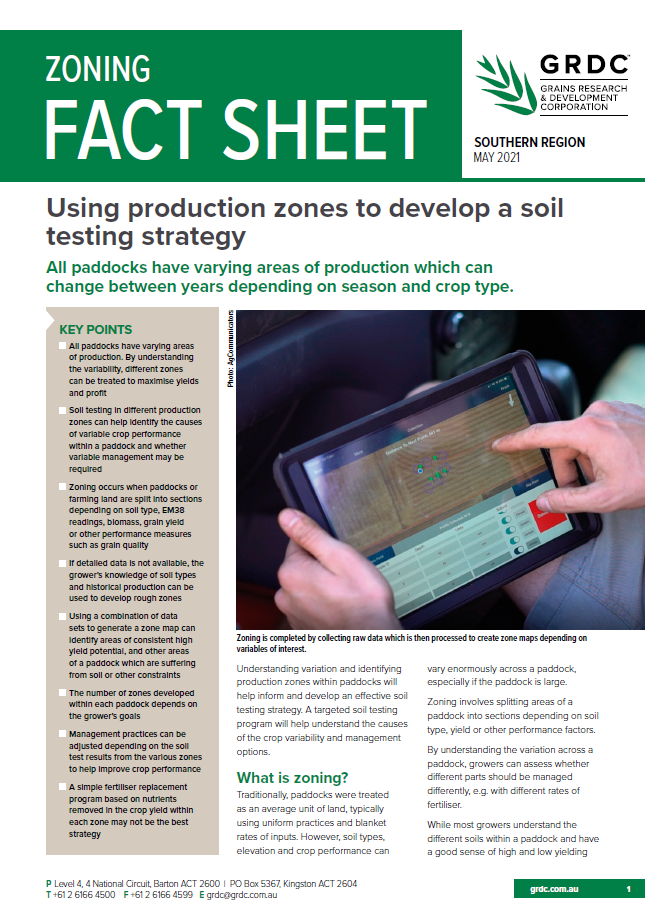Using production zones to develop a soil testing strategy
Using production zones to develop a soil testing strategy
Published: 25 May 2021
- All paddocks have varying areas of production. By understanding the variability, different zones can be treated to maximise yields and profit
- Soil testing in different production zones can help identify the causes of variable crop performance within a paddock and whether variable management may be required
- Zoning occurs when paddocks or farming land are split into sections depending on soil type, EM38 readings, biomass, grain yield or other performance measures such as grain quality
- If detailed data is not available, the grower’s knowledge of soil types and historical production can be used to develop rough zones
- Using a combination of data sets to generate a zone map can identify areas of consistent high yield potential, and other areas of a paddock which are suffering from soil or other constraints
- The number of zones developed within each paddock depends on the grower’s goals
- Management practices can be adjusted depending on the soil test results from the various zones to help improve crop performance
- A simple fertiliser replacement program based on nutrients removed in the crop yield within each zone may not be the best strategy
Understanding variation and identifying production zones within paddocks will help inform and develop an effective soil testing strategy. A targeted soil testing program will help understand the causes of the crop variability and management options.
Download PDF
Region: South
GRDC Project Code: ASO1805-001RTX,

